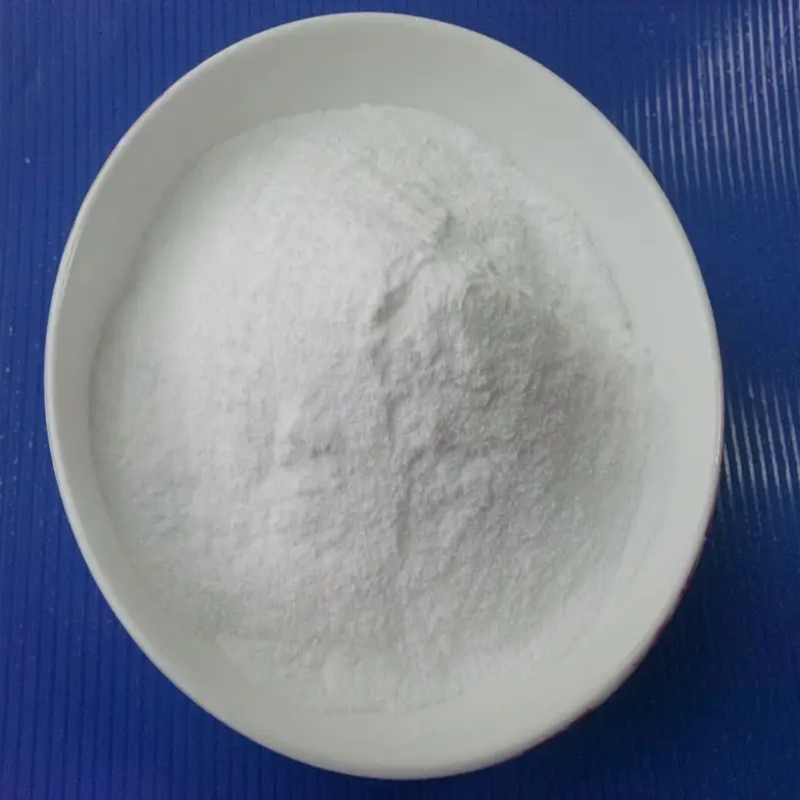-
Categories
-
Pharmaceutical Intermediates
-
Active Pharmaceutical Ingredients
-
Food Additives
- Industrial Coatings
- Agrochemicals
- Dyes and Pigments
- Surfactant
- Flavors and Fragrances
- Chemical Reagents
- Catalyst and Auxiliary
- Natural Products
- Inorganic Chemistry
-
Organic Chemistry
-
Biochemical Engineering
- Analytical Chemistry
- Cosmetic Ingredient
-
Pharmaceutical Intermediates
Promotion
ECHEMI Mall
Wholesale
Weekly Price
Exhibition
News
-
Trade Service
*For medical professionals only
Alzheimer's disease (AD) has become one of
the most worrying problems for the elderly today.
In the absence of relevant treatments, prevention is crucial
.
There is substantial evidence that lifestyle (e.
g.
, physical activity and cognitive stimulation) may reduce age-related cognitive decline, delay the onset of AD, and enhance cognitive reserves (e.
g.
, thinking speed and memory) [1-6
].
However, the benefits are also "different from person to person"
.
Recently, Dr.
Judy Pa of the University of California, San Diego, and her team of researchers published a study in Neurology[7] that the more physical activity they participated, the faster women's thinking speed reserved, but men did not observe this association
.
However, participation in more mental activities, both men and women, is associated
with increased reserves of thought speed.
At the same time, the AD risk gene APOE 4 attenuates the benefit of physical and mental activity in
women.
Screenshot of the first page of the paper
Although meta-analyses of some retrospective studies suggest that the relationship between exercise and cognitive ability is stronger in women than in men [8,9], recent prospective studies, including a exercise randomized controlled trial, have shown that men have greater cognitive improvement after exercise than women [10].
So who benefits more from exercise than men and women?
APOE 4 is known to be a risk gene
for AD.
So, how is the association between lifestyle factors and cognitive reserves affected by gender and APOE 4? To figure this out, the researchers designed the study
using the Washington Heights-Ingwood Columbia Aging Project (WHICAP).
The study included 758 participants, with an average age of 76 years and 62% being female
.
Some of them have no thinking or memory problems (CN), some have mild cognitive impairment (MCI), and some have dementia
.
Participants underwent brain scans, thought speed, and memory tests, and used limiting homotyping to determine APOE genotypes [11].
Image sourceveer
To quantify lifestyle factors, the researchers adopted two indicators
: metabolic equivalent (METS) and cognitive activity (COGACT).
METS is converted from physical activity assessed using the Godin Recreation Questionnaire [12] and constructed as minutes × number of × coefficients (9 for strenuous activity, 5 for moderate activity, and 3 for light activity
).
COGACT is defined as the total score for participating in the following activities in the past 13 months: reading magazines, newspapers or books; Classes; [13] Playing cards or bingo
.
Cognitive reserves, which can be created when people have strong thinking abilities, the study focused on memory and thought speed reserves, quantified by selective reminder tests (complete recall, immediate recall, and delayed recall) and color-tracking tests A and B [14].
The researchers first analyzed how gender is an association
between lifestyle-changing factors and cognitive reserves.
When gender was not taken into account, the METS of all participants was positively correlated with the thought speed reserve (β=0.
05, 95% CI: 0.
01-0.
08).
However, sex-stratified analysis showed that this association was present only in women (β = 0.
04, 95% CI: 0-0.
08), while it was not observed in men
.
In addition, METS was not associated with memory reserve in both men and women (β = 0.
004, 95% CI: -0.
04-0.
05).
The relationship between METS and thought speed and memory reserves
For COGACT, there was a positive correlation between COGACT and thought speed reserve for all participants (β=0.
13, 95% CI: 0.
05-0.
21), regardless of gender
.
But specifically, the gender difference is still a bit obvious, on average, every additional participation in cognitive activities, the aging speed of thinking processing will be reduced by 13 years, if according to gender distinction, women reduce by 10 years, men reduce by 17 years
.
In contrast, although COGACT was not associated with memory reserve (β=0.
04, 95% CI: -0.
03-0.
11), sex-stratified analysis showed a positive correlation trend in women (β=0.
06, 95% CI: -0.
02-0.
14), while men did not
.
The relationship between COGACT and thought speed and memory reserves
Immediately afterward, the researchers shifted their focus to the APOE 4 carrying state and found that the presence of the APOE 4 allele modulates the relationship between METS and thought speed reserves in women (β = 0.
08, 95% CI: 0-0.
15).
That is, non-carrier women had a stronger association between METS and thought speed reserve (β=0.
06, 95% CI: 0.
02-0.
11) compared to APOE 4 carriers, while men were not regulated
by the APOE 4 allele.
At the same time, the APOE 4 allele does not affect the relationship between
METS and memory reserve.
APOE e4 carries status to METS in relation to the sex stratification of velocity and memory reserves
Similar to METS, the APOE 4 allele also regulates the relationship between COGACT and thought speed reserve in women (β=0.
24, 95% CI: 0.
03-0.
44), i.
e.
, women carrying APOE 4 weaken the beneficial relationship between COGACT and thought speed reserve (β=-0.
11, 95% CI: -0.
31-0.
09).
No significant APOE 4 regulation
was observed in men.
In addition, in the association between COGACT and memory reserve, the regulation of APOE 4 in women was also found, and the positive correlation between COGACT and memory reserve was significantly increased without carrying APOE 4 (β=0.
15, 95% CI: 0.
05-0.
25).
APOE 4 carries a sex-stratified relationship to COGACT with velocity and memory reserves
Overall, the study suggests that gender and APOE 4 carrier status are important factors to consider in the beneficial association of lifestyle factors
on cognitive reserves.
However, it is worth noting that the activity was based on participants' self-reported questionnaire answers, which may result in less accurate
results due to memory bias in individuals with gender or cognitive impairments.
Future studies should use objective activity levels, such as accelerometers, to measure physical activity, which will help determine the validity
of this finding.
In addition, future research will need to examine the causal relationship between lifestyle activity and cognitive reserves, and how sex and APOE 4 alter the causal relationship, which will facilitate the development of more precise lifestyle recommendations
based on gender and APOE 4 status.
References
[1] Verghese J, Lipton RB, Katz MJ, et al.
Leisure activities and the risk of dementia in the elderly.
N Engl J Med.
2003; 348(25):2508-2516.
doi:10.
1056/NEJMoa022252
[2] Cheng ST.
Cognitive Reserve and the Prevention of Dementia: the Role of Physical and Cognitive Activities.
Curr Psychiatry Rep.
2016; 18(9):85.
doi:10.
1007/s11920-016-0721-2
[3] Casaletto KB, Rentería MA, Pa J, et al.
Late-Life Physical and Cognitive Activities Independently Contribute to Brain and Cognitive Resilience.
J Alzheimers Dis.
2020; 74(1):363-376.
doi:10.
3233/JAD-191114
[4] van Praag H, Kempermann G, Gage FH.
Neural consequences of environmental enrichment.
Nat Rev Neurosci.
2000; 1(3):191-198.
doi:10.
1038/35044558
[5] Brown BM, Peiffer JJ, Martins RN.
Multiple effects of physical activity on molecular and cognitive signs of brain aging: can exercise slow neurodegeneration and delay Alzheimer's disease?.
Mol Psychiatry.
2013; 18(8):864-874.
doi:10.
1038/mp.
2012.
162
[6] Voss MW, Vivar C, Kramer AF, van Praag H.
Bridging animal and human models of exercise-induced brain plasticity.
Trends Cogn Sci.
2013; 17(10):525-544.
doi:10.
1016/j.
tics.
2013.
08.
001
[7] Pa J, Aslanyan V, Casaletto KB, et al.
Effects of Sex, APOE4, and Lifestyle Activities on Cognitive Reserve in Older Adults [published online ahead of print, 2022 Jul 20].
Neurology.
2022; 10.
1212/WNL.
0000000000200675.
doi:10.
1212/WNL.
0000000000200675
[8] Barha CK, Liu-Ambrose T.
Sex differences in exercise efficacy: Is midlife a critical window for promoting healthy cognitive aging?.
FASEB J.
2020; 34(9):11329-11336.
doi:10.
1096/fj.
202000857R
[9] Barha CK, Hsiung GR, Best JR, et al.
Sex Difference in Aerobic Exercise Efficacy to Improve Cognition in Older Adults with Vascular Cognitive Impairment: Secondary Analysis of a Randomized Controlled Trial.
J Alzheimers Dis.
2017; 60(4):1397-1410.
doi:10.
3233/JAD-170221
[10] Stern Y, Lee S, Predovan D, P Sloan R.
Sex Moderates the Effect of Aerobic Exercise on Some Aspects of Cognition in Cognitively Intact Younger and Middle-Age Adults.
J Clin Med.
2019; 8(6):886.
Published 2019 Jun 21.
doi:10.
3390/jcm8060886
[11] Hixson JE, Vernier DT.
Restriction isotyping of human apolipoprotein E by gene amplification and cleavage with HhaI.
J Lipid Res.
1990; 31(3):545-548.
[12] Godin G, Shephard RJ.
A simple method to assess exercise behavior in the community.
Can J Appl Sport Sci.
1985; 10(3):141-146.
[13] Helzner EP, Scarmeas N, Cosentino S, Portet F, Stern Y.
Leisure activity and cognitive decline in incident Alzheimer disease.
Arch Neurol.
2007; 64(12):1749-1754.
doi:10.
1001/archneur.
64.
12.
1749
[14] Scarmeas N, Albert SM, Manly JJ, Stern Y.
Education and rates of cognitive decline in incident Alzheimer's disease.
J Neurol Neurosurg Psychiatry.
2006; 77(3):308-316.
doi:10.
1136/jnnp.
2005.
072306
Responsible editorWang Xuening







